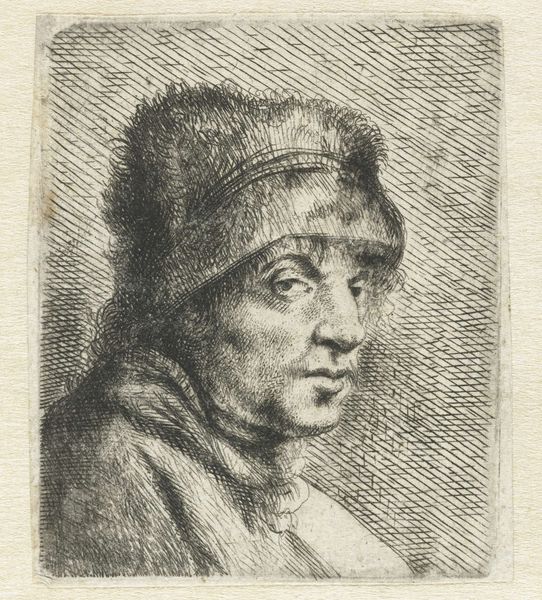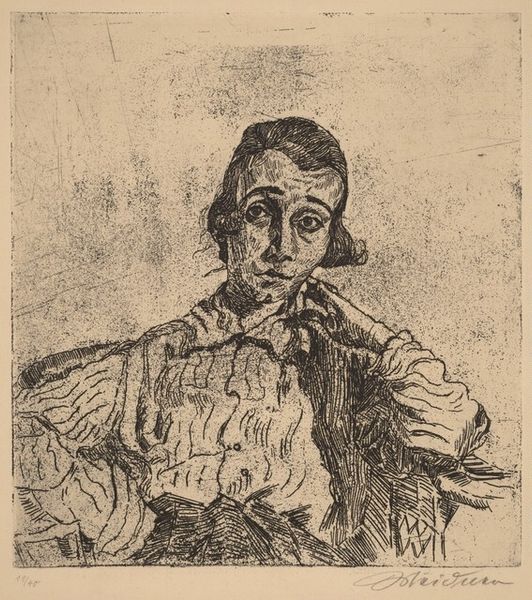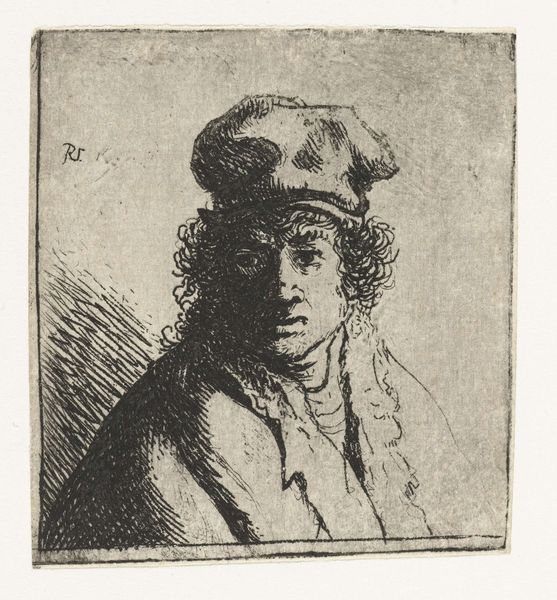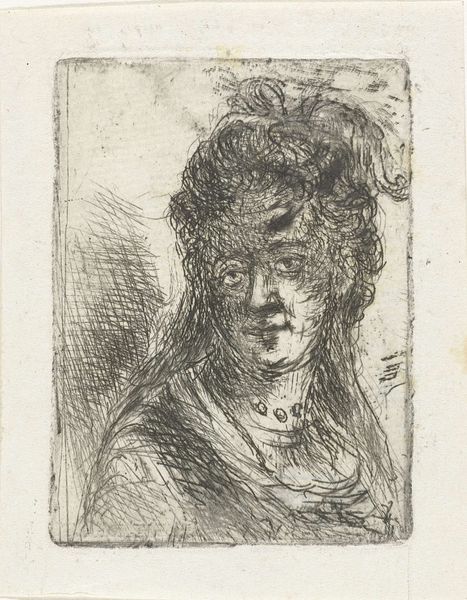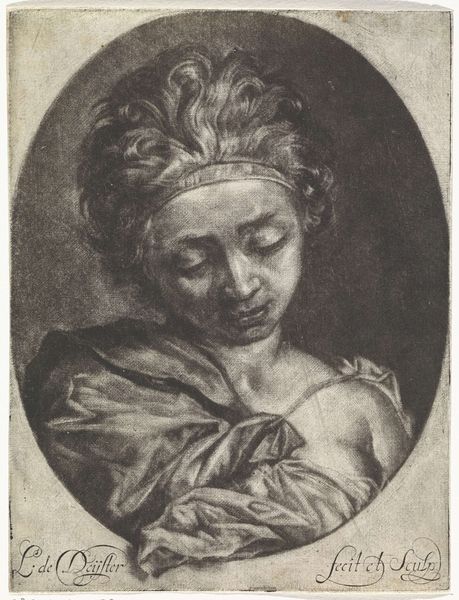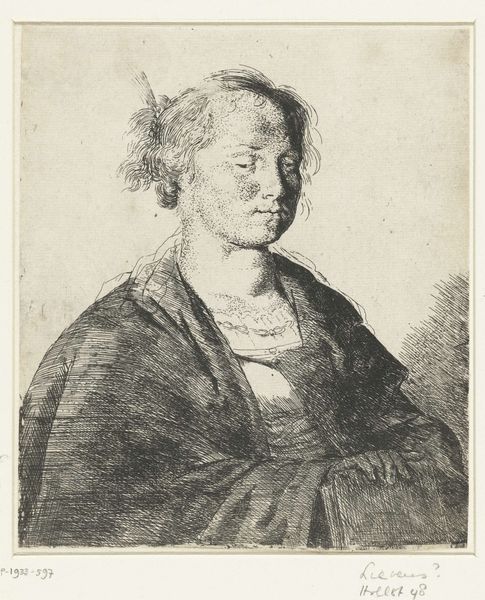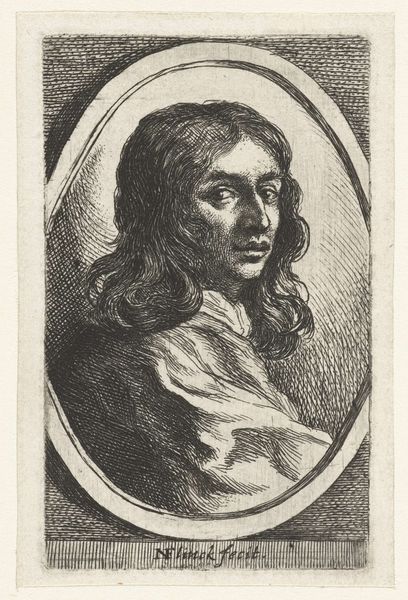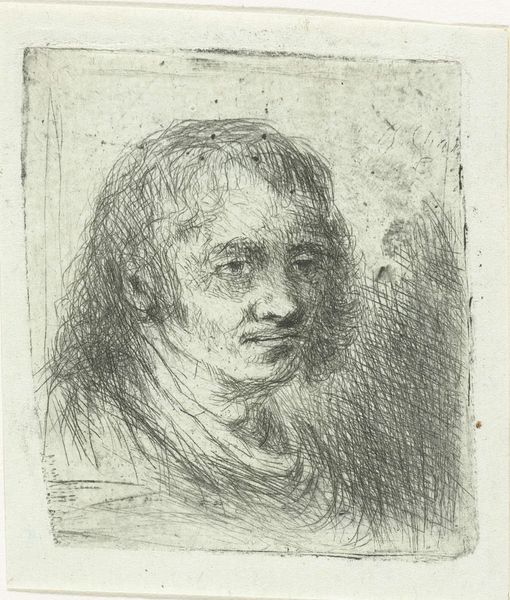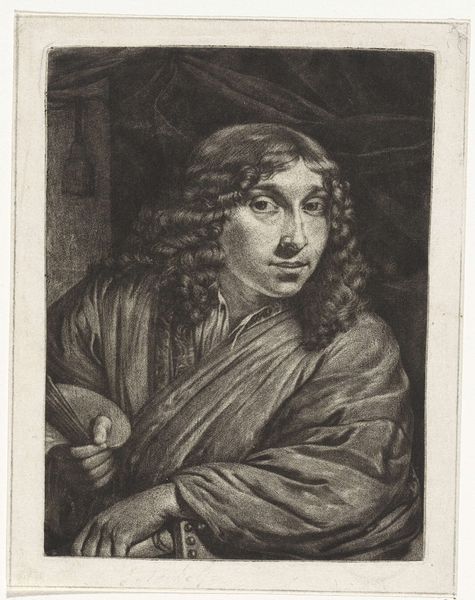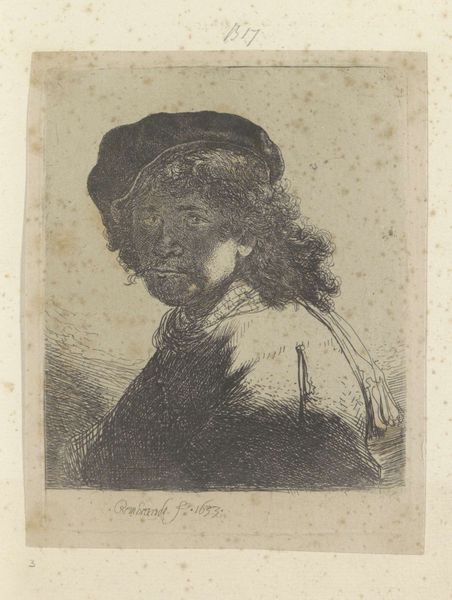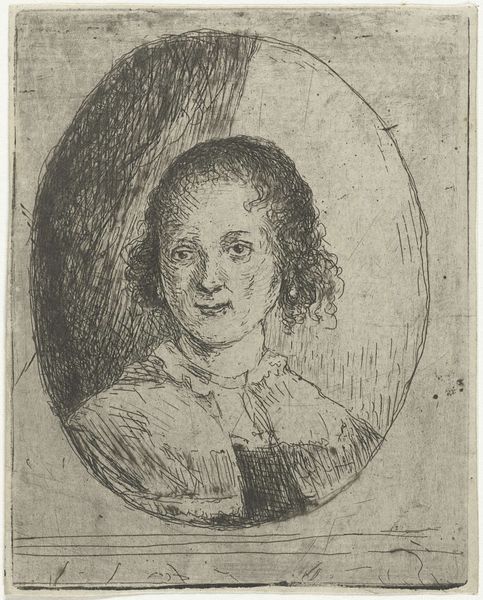
print, etching
#
portrait
# print
#
etching
#
expressionism
Dimensions: plate: 26.3 × 20.2 cm (10 3/8 × 7 15/16 in.) sheet: 38.2 × 28.4 cm (15 1/16 × 11 3/16 in.)
Copyright: National Gallery of Art: CC0 1.0
Editor: This is "Pola," an etching from 1921 by Ludwig Meidner. The woman’s face looks so somber; almost weary. The hatching creates a beautiful effect, adding so much texture, especially in the clothing. I'm curious—what’s your take on this piece? Curator: Weariness is a wonderful word for it, a silent sigh made visible. Meidner's lines are never just lines, are they? They feel like raw nerves, vibrating with the energy, or perhaps anxiety, of post-World War I Germany. You see how the face, though a portrait, seems to almost dissolve into the background, swallowed by a kind of… existential fog? The sitter almost disappears, consumed in shadow. I think it embodies the feeling of a generation adrift, unsure of what to hold onto. Does it make you consider this portrait more symbolically? Editor: I see what you mean about the era's atmosphere creeping into the image. I hadn’t quite made that connection, but now I definitely sense that the “fog” is more than just background. How do you see that manifesting specifically? Curator: In everything! The restless lines forming the face, the somewhat unsettling gaze, the rough almost frenzied scratching technique. All conspire to form an image that goes far beyond a likeness. It's the era's emotional DNA captured on copper. But isn't that one of the best things art can do? It acts like a sensitive photographic plate recording not just an image but the spirit of the age itself. Don't you find it incredibly powerful? Editor: Absolutely. It's amazing how a portrait can be more than just a face; it can be a mirror reflecting an entire world. Thank you. Curator: And thank you, for prompting me to truly see what lies within this marvelous work once more.
Comments
No comments
Be the first to comment and join the conversation on the ultimate creative platform.
